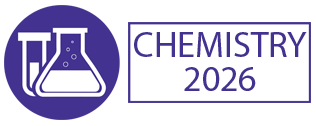Raman Spectroscopy
Raman spectroscopy is a powerful analytical technique used to characterize the chemical composition and molecular structure of materials based on their interaction with laser light. When a sample is irradiated with monochromatic light, a small fraction of the scattered light undergoes a change in energy due to interactions with molecular vibrations, resulting in Raman scattering. This scattering generates a unique spectral fingerprint that provides information about chemical bonds, functional groups, and molecular conformations within the sample. Raman spectroscopy offers advantages such as non-destructive analysis, minimal sample preparation, and the ability to analyze samples in various states (solid, liquid, gas). It is widely used in diverse fields including materials science, pharmaceuticals, forensics, and biomedical research for identification, characterization, and quality control purposes. Raman spectroscopy can detect and differentiate between different chemical species, polymorphs, and phases within a sample. Advances in instrumentation, such as portable Raman spectrometers and micro-Raman systems, enable in situ and real-time analysis of samples in various environments. Collaboration between scientists, engineers, and industry professionals drives innovation in Raman spectroscopy, expanding its applications and capabilities for solving complex analytical challenges.

Hossam A Gabbar
Ontario Tech University, Canada
Victor John Law
University College Dublin, Ireland
Alexander Bagaturyants
National Research Nuclear University MEPhI, Russian Federation
Sergey Suchkov
N.D. Zelinskii Institute for Organic Chemistry of the Russian Academy of Sciences, Russian Federation
Shree Niwas Chaturvedi
Centre for Aptitude Analysis and Talent Search, India
Pieter Samyn
SIRRIS, Belgium




Title : Advances in plasma-based radioactive waste treatment
Hossam A Gabbar, Ontario Tech University, Canada
Title : Unraveling the ultrastructure and functions of the neuronal membrane skeleton using super-resolution fluorescence microscopy
Zhou Ruobo, Djillali Liabes University of Sidi Bel Abbes, Algeria
Title : Solar box cooker dehydration, and relative humidity endpoint detection, of lamiaceae culinary leaves on the island of Crete
Victor John Law, University College Dublin, Ireland
Title : Nutrient and heavy metal loads from the Ribeiras to Coastal zones: A land-ocean continuum perspective in Madeira Island
Aracelis Del Carmen Narayan Rajnauth, University of Porto, Portugal
Title : Prospective polyoxometalate-based covalent organic framework heterogeneous catalysts
Arash Ebrahimi, Comenius University Bratislava, Slovenia
Title : Eliminating implant failure in humans with nano chemistry: 30,000 cases and counting
Thomas J Webster, Brown University, United States